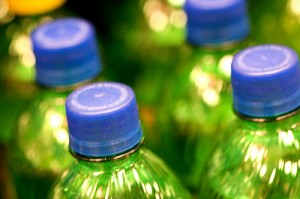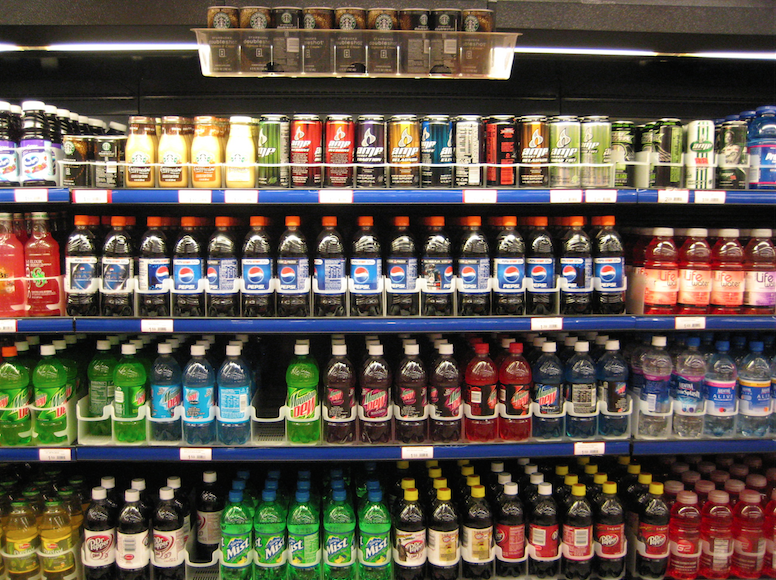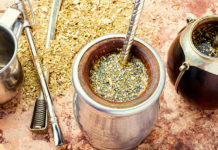In a summer poll conducted by Gallup, reports suggest that highly popular, sugary soda drinks are becoming a thing of the past for Americans. According to the survey, “almost two-thirds of Americans actively avoid soda in their diet”, which is an approximate 20% increase from those polled in 2002. That’s great news! But there is still work to be done.
This would suggest that fewer calories are being consumed. But not so fast. The United States is one of the most obese countries and has a long way to go in order to reduce soda consumption overall. Just two years prior to this study, Gallup reported that almost 50% of Americans had at least one soda per day. Even though soda provides zero health benefits or nutritional value, Americans are still drinking millions of sugary soft drinks per day. However, more people are becoming health conscience and are thinking twice about their drink selections.
Many health risks are associated with poor diet and increased sugar. Soda is one of the biggest contributors to empty calories and high sugar content. As the reports show, people are starting to actively avoid soda in their diet, and maybe more will think twice if they actually understand what it does to the body.
Fat Buildup
Danish researchers have found that drinking soda can lead to fat build up around the liver and skeletal muscles. Fat buildup in these two places can lead to insulin resistance and diabetes risks. Studies found that people who drank regular soda everyday for six months saw increases in liver fat, skeletal fat, triglyceride blood fat, and an 11% increase in their cholesterol.
The Curse of the Diet Soda
Many soda drinkers believe they will avoid calories and stay trim by drinking diet soda instead of regular. Diet soda often contains aspartame, which studies have shown raise blood glucose levels and lead to the excess glucose being converted to fat cells. Aspartame is one of the most common artificial sweeteners in use. Over 8,000 different food and beverage products contain it.
I have had numerous patients come to me over the years suffering from infertility, migraine headaches, muscle pain, ADHD, ADD, abdominal pain, autoimmune symptoms, indigestion, fluid retention, bloating, gas….the list goes on and on….where the cause was traced back to aspartame. In these patients, testing was easy. They were instructed to eliminate aspartame from their diet and note any improvement.
Please see my previous article about aspartame. This is one of the easiest toxins to identify and eliminate from your diet. Your body will thank you for it!
Caramel Color Correlation
The amount of artificial coloring in soda has been reported to be highly dangerous. There is no reason for the artificial coloring other than the brown color! It’s unnecessary for consumers to be exposed to such toxic substances in their drinks. Consumer Reports magazine found that the chemical 4-methylimodazole, or 4-Mel could cause cancer. Long-term exposure to 4-Mel has caused lung cancer in mice. Currently, the FDA does not require food or drinks to carry a warning label for those products containing 4-MeI. The amount of attention that this issue has received even caused Coca-Cola to announce they would switch to a low 4-MeI formula for their products and assured their consumers that drinking their products was, and always has been, safe.
Accelerated Aging
All sodas contain phosphates, or phosphoric acid; a weak acid that gives soda the tangy flavor and helps improve shelf life. Despite phosphoric acid being prevalent in many foods such as meat, dairy, and nuts, too much of it can cause major health issues. Risk of heart and kidney disease, muscle loss, and osteoporosis are just a few of the main concerns. As if those risks weren’t enough, one study published in the 2010 issue of FASEB Journal, suggested that high levels of phosphate (similar to those found in soda) accelerated aging in mice and actually caused the test subjects to die a full five weeks earlier than those that had normal phosphate level diets.
Mountain Dew Mind

Mountain Dew soft drinks contain flame retardant. Yes, you read that correctly: flame retardant. The same chemical that is used to fireproof plastics is present in that lime-green, citrus-flavored beverage.
Brominated vegetable oil, or BVO is banned in foods throughout Japan and Europe but found in 10% of sodas sold in the United States. The FDA limits the amount of BVO in fruit-flavored beverages and suggests, like all chemicals, the dose is what determines the toxicity. However, BVO has been proven to contribute to memory loss, nerve disorders, and skin lesions when excess exposure happens. The typical soft drink containing BVO has approximately half of the concentration allowed by law.
Hormonal Haywire
Not only do the ingredients in soda wreak havoc on the body, the cans that they are packaged in can cause damage as well. Epoxy resin called bisphenol A (BPA) is used to line the aluminum cans used for soda packaging. BPA is used to keep acids in the soda from reacting with the metal. Over time, the chemical bond connecting the BPA deteriorates and releases the BPA molecules in the liquid within the can itself. Low dose effects are commonly associated with the endocrine system, including brain development, nervous system function, reproductive system, and growth and metabolism; along with other important long-term functions and processes. Studies of BPA noted that exposure (even in low dosages) may be connected to early sexual maturation in females, increase in neurobehavioral disorders such as ADHD or autism, as well as prostate and breast cancers which are hormonally mediated types of cancer.
All of these factors demonstrate just how dangerous soda can be for the body and why more and more Americans are starting to make changes when it comes to soda consumption. It is obvious there are many risks associated with these sugary beverages. Unnecessary toxins and potential damage to your brain, heart, liver, and kidneys from the various chemicals within a drink is not worth it. It may be a long road ahead to getting changes made in the overall population’s consumption of soda, but at least the trend has started and is picking up speed.









Quite frankly, the body of science debunks the alarmist claims made here. For example, with respect to caramel coloring, the FDA has said that a consumer ‘would have to drink more than a thousand cans of soda in a day to match the doses administered in studies that showed links to cancer in rodents.’ Moreover, research demonstrates that low-calorie sweeteners including aspartame are, in fact, safe. For example, the European Food Safety Authority recently conducted a large-scale risk assessment on aspartame and concluded this ingredient is safe for the general population, and ruled out alleged adverse effects. At the end of the day, it’s really about moderation in all calories we consume, as well as integrating physical activity. Vilifying any one source of calories is counterproductive, and won’t enhance health.
Hello American Beverage Association,
Thank you for your input on this article.
All My Best,
Dr. Maxwell
American Beverage Association, Your a joke! Your lies about aspartame are laughable I’ve read how Dr. Death Donald Rumsfeld used his political clout against the advise of USDA doctors to get Aspartame legalized for human consumption. People are waking up to the poison chemical laden trash that your industry serves up.
John
EASTMAN’S FITNESS
Hi John,
Thank you for responding to the ABA!
It’s great to see people are becoming informed
and not putting up with this stuff.
All My Best,
Dr. Maxwell